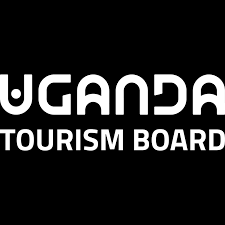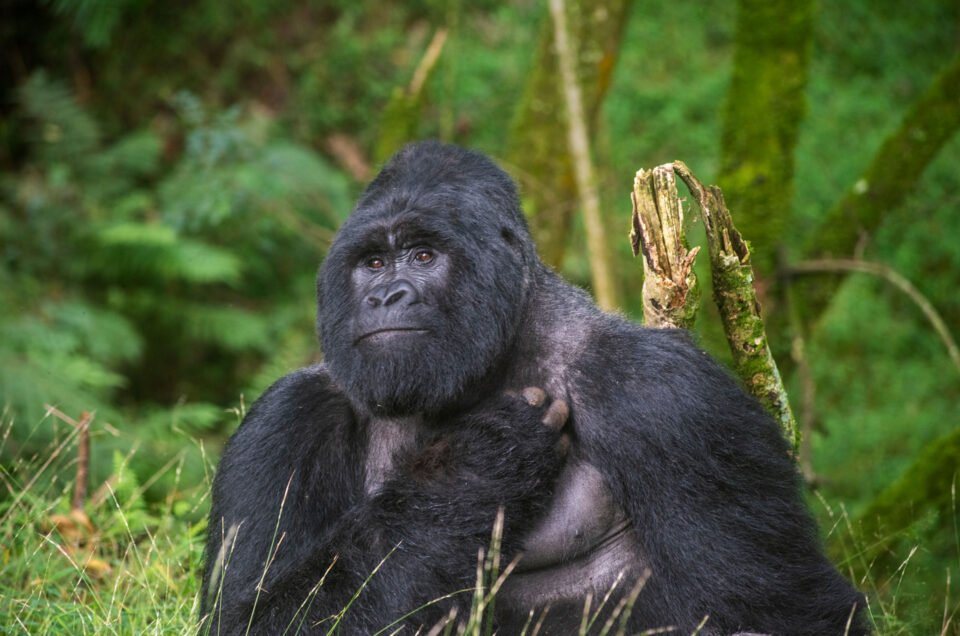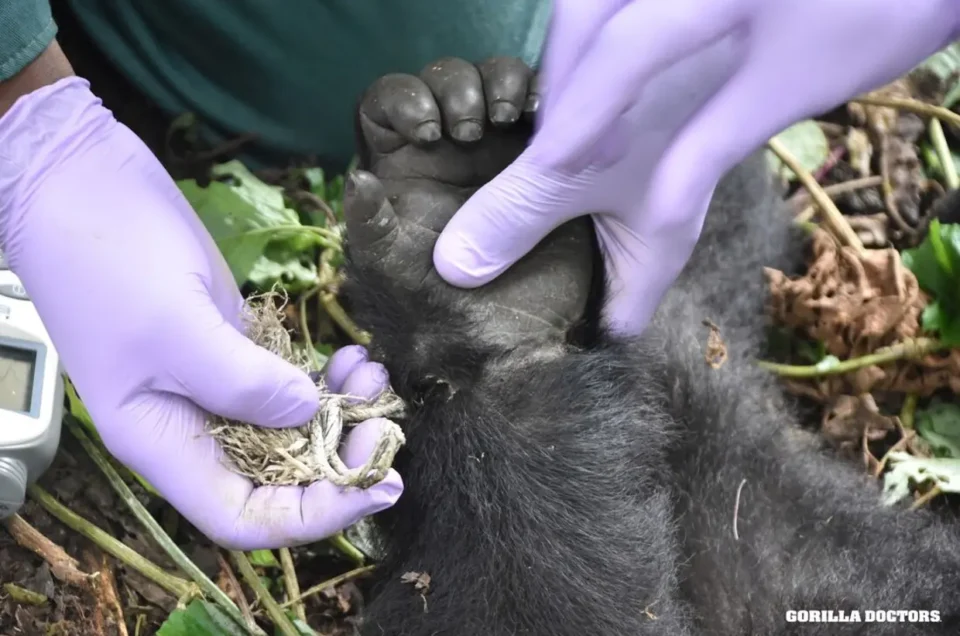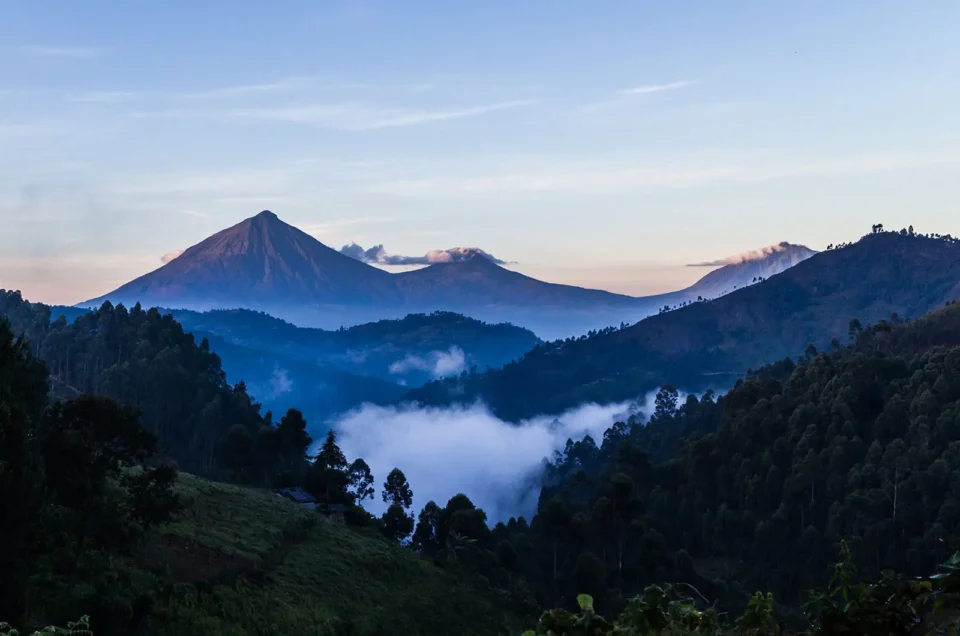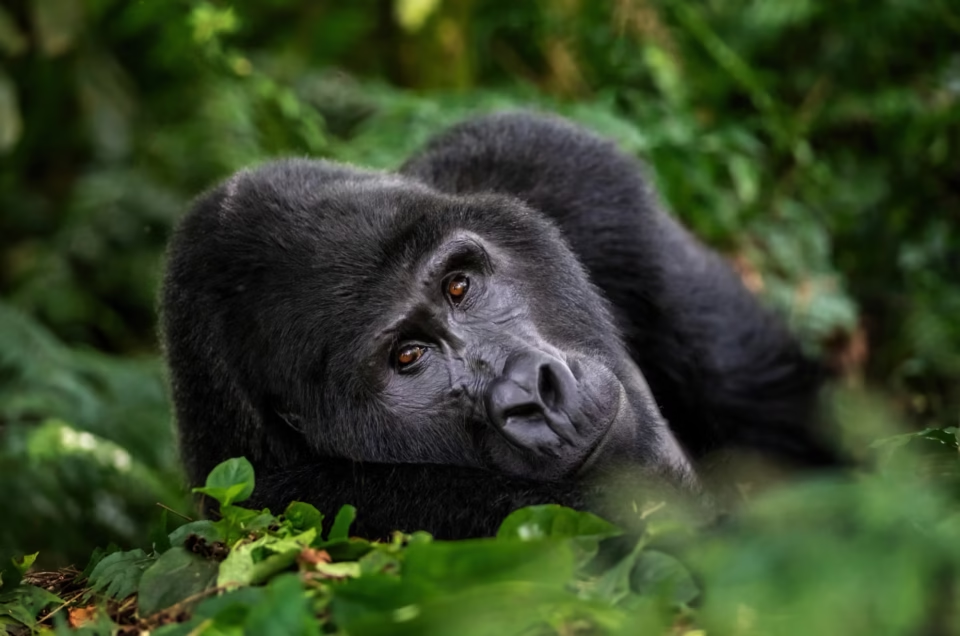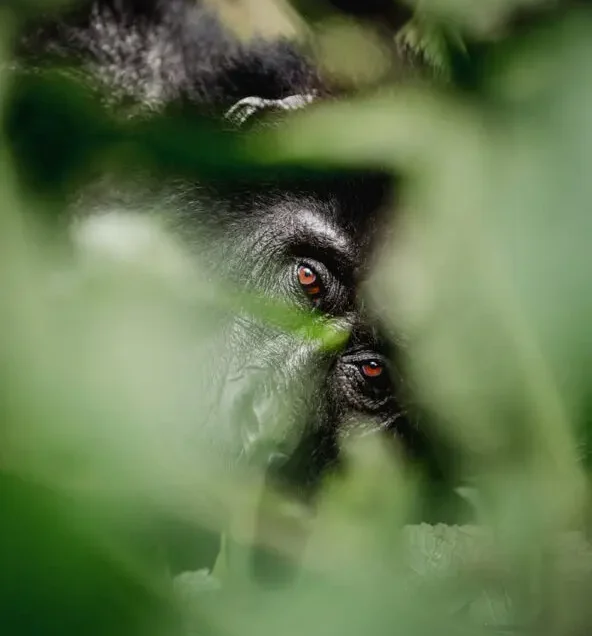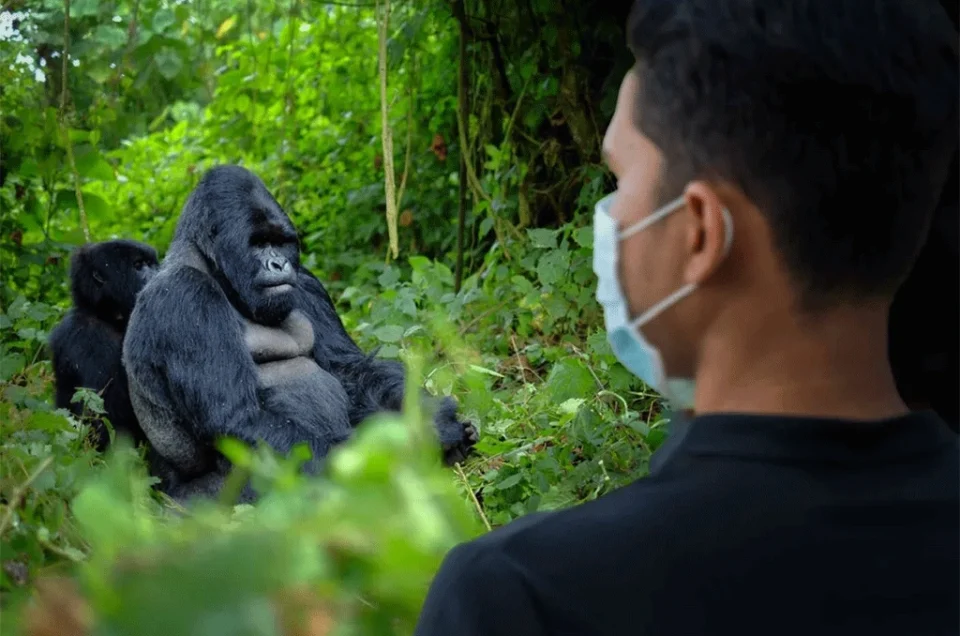Best Gorilla Trekking Tours 2026/2027
Gorilla Trekking Tours In Uganda And Rwanda
With just over 1000 of these endangered primates left on Earth, your visit directly contributes to their conservation and helps protect them from the very real threat of poachers. The best-known places to go for gorilla trekking are Uganda’s Bwindi Impenetrable Forest and Rwanda’s Volcanoes National Park. These destinations offer some of the best gorilla trekking tours that can be combined with other exciting wildlife activities, such as Big 5 safaris, chimp trekking and birding. At Greenway, we offer the best gorilla tours in Africa. We work with expert guides, lodges, and hotels to ensure unforgettable gorilla safaris experiences.
Best Gorilla Trekking Tour Packages
Where To Go For The Best gorilla tours in Africa?
1. Bwindi Impenetrable National Park, Uganda
Uganda offers arguably the best gorilla trekking experience in Africa and is home to more than half of the world’s mountain gorilla population. In the southwest of the country lies Bwindi Impenetrable Forest National Park, a lush and hilly jungle that shelters around 25 habituated gorilla families. Trekking through this ancient forest in small groups of up to eight people, visitors get to spend one unforgettable hour with these gentle giants. It’s truly a once-in-a-lifetime adventure and a dream come true for many wildlife lovers and safari enthusiasts.
2. Volcanoes National Park, Rwanda
Rwanda is another top destination for mountain gorilla trekking. In Volcanoes National Park, visitors can join a knowledgeable ranger guide and a small group of up to eight people to track one of the 12 habituated gorilla families that live in the park’s misty, forested slopes. During the permitted one-hour encounter, you’ll have the rare chance to observe and photograph these endangered apes in their natural forest environment as they feed, play, rest, and interact with one another.
3. Mgahinga Gorilla National Park, Uganda
Mgahinga Gorilla National Park, the smallest national park in Uganda, offers a truly unique gorilla trekking experience. It is home to one habituated gorilla group whose range spans both Mgahinga and the neighboring Volcanoes National Park in Rwanda. Fortunately, this group has remained on the Ugandan side for the past few years, making Mgahinga a reliable and rewarding option for gorilla trekking. With its stunning volcanic scenery and quieter trails, this park offers a more intimate and off-the-beaten-path adventure.
Which month is best to trek gorillas?
The best time for gorilla trekking in Uganda and Rwanda is during the dry seasons—June to September and late December to February. During these months, the forest trails are less muddy, vegetation is thinner, and gorillas are more likely to stay at lower altitudes, making them easier to find. The clear skies and good lighting also make for excellent photography conditions. However, this is also peak season, so trekking permits and accommodation prices are generally higher.
Gorilla trekking is still possible during the rainy seasons—March to May and October to November—but expect more challenging conditions. The trails can be slippery, and treks may take longer. On the upside, the forests are especially lush and beautiful, crowds are fewer, and prices for permits and lodges are often lower, making it a more peaceful and affordable experience.
Good To Know
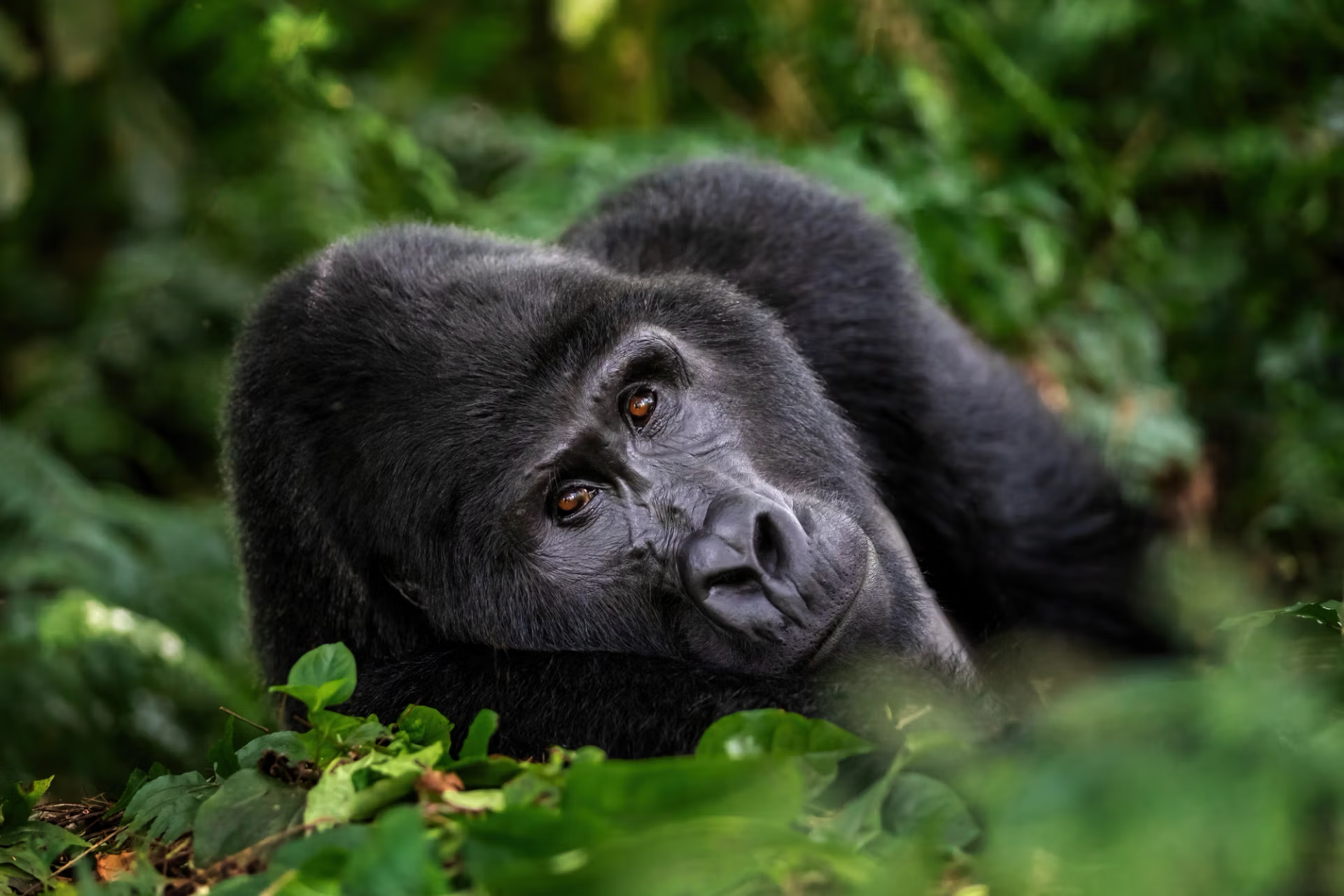
How difficult is gorilla trekking?
Gorilla trekking in Uganda and Rwanda can be moderately to highly challenging, depending on your fitness level, the terrain, weather, and the gorilla group you’re visiting. Treks can last from 1 to 4+ hours through steep, muddy forest paths at high altitudes. You don’t need to be an athlete—just reasonably fit and prepared. Treks are led by expert ranger guides, and porters are available to help carry your bag or assist on the trail. For older or less mobile visitors, sedan chair services are available.
Is gorilla trekking dangerous?
Gorilla trekking is not dangerous when done with expert guides and the right precautions. The gorillas you visit are habituated, meaning they’re used to people and generally calm and peaceful. Treks are always led by trained rangers who know how to keep both visitors and gorillas safe. Before you start, you’ll get a full safety briefing on how to behave around the gorillas—like keeping a safe distance and avoiding sudden movements. While the forest trails can be steep, muddy, or slippery, they’re not risky if you take your time and follow instructions. With support from rangers and porters, and a bit of preparation, gorilla trekking is a safe, thrilling, and unforgettable wildlife experience.
How Tourism Saves Gorillas?
Gorilla trekking tourism is a crucial part of conserving the highly endangered mountain gorillas. With only about 1,000 left in the wild, the money from trekking permits funds anti-poaching patrols, habitat protection, research, and health programs to keep gorillas safe and healthy. Tourism also benefits local communities by creating jobs and encouraging people to protect wildlife, while strict rules help prevent disease transmission between humans and gorillas. Beyond direct support, gorilla trekking raises global awareness, turning visitors into passionate advocates for conservation, ensuring these magnificent animals and their forests survive for generations to come.
Is Rwanda or Uganda better for gorilla trekking?
Gorilla trekking in Uganda and Rwanda offers unforgettable wildlife experiences, but the two countries differ significantly in costs, terrain, and trekking style. As of July 2025, Uganda’s gorilla trekking permits cost $800 for foreign non-residents, making it a more affordable option compared to Rwanda, where permits are priced at $1,500 per person for all international tourists.
Uganda offers trekking in two parks—Bwindi Impenetrable Forest and Mgahinga Gorilla National Park—with Bwindi known for its rugged, dense jungle trails and a more authentic, adventurous experience. In contrast, Rwanda’s Volcanoes National Park features gentler, more accessible terrain, making it ideal for travelers of varying fitness levels and those seeking a smoother trek.
Both countries strictly regulate gorilla visits to protect these endangered animals, limiting group sizes and enforcing health protocols. When choosing between them, consider your budget, desired trekking challenge, and additional activities available—Uganda offers a wider range of safari and adventure options, while Rwanda provides a more polished tourism infrastructure. Both promise remarkable encounters with mountain gorillas in their stunning natural habitats.
What To Pack For Gorilla Trekking?
Pack lightweight, quick-drying, neutral-colored long-sleeved shirts and trousers to protect against insects and thorny plants—shorts are not recommended. Sturdy, waterproof hiking boots with good ankle support are a must, along with gaiters or long socks for extra protection. Bring a waterproof rain jacket, gloves for handling vegetation, a wide-brimmed hat, UV-protection sunglasses, and hair ties to keep your view clear. A face mask is required to protect the gorillas.
Can People With Disabilities Go Gorilla Trekking?
Gorilla trekking is possible for travelers with disabilities or limited mobility. With the help of trained local porters, visitors can be carried safely through the forest in a special sedan chair—allowing full participation without the strain of hiking. The cost of hiring a sedan chair is approximately $300, which covers a team of porters to carry you to and from the gorilla viewing area. Greenway Nature Tours Africa also arranges accessible transport, supportive lodges, and easier trekking routes to ensure a smooth, comfortable, and inclusive adventure for all. Contact us today to plan your gorilla trek, no matter your ability.
What To Expect On A Gorilla Trek?
After an early breakfast at your lodge, you’ll be driven to the park headquarters to meet your park ranger and trekking team. There, you’ll receive a detailed briefing about the gorilla group you will visit and guidelines on how to behave during your encounter. Your trek then begins—often by road or sometimes on foot—leading you through diverse vegetation including bamboo forests, giant stinging nettle areas, and steep muddy slopes.
The trek can last from a couple of hours or more, depending on the gorillas’ location. Once your group locates the gorillas, you’ll have up to one hour to observe them. The gorillas may be gathered as a family, with playful sub-adults in forest clearings or feeding and resting together, though sometimes they may be on the move. While wildlife is unpredictable, visitors consistently describe this experience as deeply moving and unforgettable.
When your park ranger signals it’s time to leave, you’ll trek back to the starting point where your guide and vehicle await. Afterwards, you return to your lodge for a well-deserved hot shower and rest, followed by a celebratory dinner to reflect on the day’s incredible encounter.
Read More On The Blog
Our Trusted Partners
